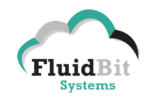This system operates independently and exhibits knowledge on the attached gadget without needing a bunch system like a computer. Both digital and analog inputs are accepted by them, and the output is produced to function Limitations of AI. This article will give you a radical element on what embedded system is, ranging from microcontrollers to their advanced functions.
Embedded Techniques
Growth is anticipated on the tendencies of accelerating demand for IoT devices, industrial automation, and good technologies. In the healthcare industry, embedded systems are crucial, their purposes include sensors used to watch vital signs as properly as processing the imagery from medical scans. A D-A (Digital-to-Analog) converter, also referred to as a DAC, is a fundamental part in embedded methods that’s used to transform digital signals into analog alerts. It plays a crucial position in enabling the embedded system to interface with the analog world.

In the current panorama of the Web of Things (IoT), embedded devices are ubiquitous, with automobiles alone utilizing hundreds of sensors. IoT techniques, in contrast to conventional embedded systems, necessitate lower power consumption, enhanced security and reliability, and the aptitude for advert hoc networking citation needed. The communication layer must facilitate the conversion between numerous protocols, while the applying layer should enable cloud computing capabilities over the Internet. As Soon As the analog sign is converted into digital type, it could be processed, analysed, and manipulated by the embedded system’s digital components, such as microcontrollers or digital signal processors (DSPs). The digital data can undergo additional computations, filtering, or storage, enabling the embedded system to make decisions, trigger actions, or provide significant outputs primarily based on the processed information. Embedded systems are on the coronary heart of countless units we depend on every day, from smartphones and medical tools to industrial machinery and cars.
Reminiscence
Software engineers, then again, focus on the source code needed to accomplish the job in hand. In other words, hardware engineers build the body and software program engineers give the mind. However although these roles are separate, an Embedded Software Engineer is anticipated to know hardware no less than at the degree of a Junior Hardware Engineer and vice versa for the Hardware engineers about software program. The demand for revolutionary know-how solutions will grow as industries embrace digital transformation. Embedded techniques play a pivotal function in developing cutting-edge technologies, from enhancing gadget performance to enhancing operational efficiency. Businesses that harness the potential of those systems are well-positioned to lead in innovation and drive future advancements throughout numerous sectors.
- Embedded system designers typically additionally use compilers, assemblers and debuggers to develop embedded system software program.
- These embedded systems have much less consumer interface and, in some circumstances, it doesn’t have a person interface.
- Embedded techniques can vary from having no user interface (UI), such as buttons, LEDs and touchscreen sensing that performs a single task, to complicated graphical person interfaces (GUIs).
- In certain purposes, where small size or power effectivity usually are not main concerns, the elements used could also be compatible with those used in general-purpose x86 private computers.
We have additionally taken a take a look at embedded system examples, traits, advantages, and disadvantages. Understanding what’s an embedded system and how it works is very important for developers and engineers. Embedded systems are extensively used in medical gadgets, similar to pacemakers, defibrillators, affected person https://www.globalcloudteam.com/ monitoring methods, and medical imaging tools. These techniques should meet inflexible safety and reliability standards whereas providing correct and real-time data processing and control capabilities. These embedded methods have much less user interface and, in some cases, it does not have a consumer interface.
The primary distinction between Microprocessors and Microcontrollers is the presence of Peripherals. A microcontroller is made up of 2 main components, the microprocessor, and its peripherals. Embedded methods are used in varied spaces, corresponding to industrial, automotive, telecommunications, industrial, aerospace, home appliances, and army purposes.
With these details, they can be divided into distinct categories and further subcategories. It is why we see the extra progressive and lesser measurement, weight, power, and cost consuming techniques each time in the embedded computer system market. According to a 2018 report printed by QYResearch, the worldwide marketplace for the embedded techniques business was valued at $68.9 billion in 2017 and is anticipated to rise to $105.7 billion by the top of 2025. For instance, the dimensions of the cell phone must be small as it ought to be compact and needs to entry with our handholds. Similarly, the size of the spacecraft must be big as its applications have large features to perform.
Embedded Systems In Automotive Purposes

This method extends the capabilities of the embedded system, avoids the price of a display, simplifies the board help package deal (BSP) and allows designers to build a wealthy user interface on the PC. A good example of that is the mix of an embedded HTTP server working on an embedded system (such as an IP camera or a community router). The consumer interface is displayed in an online browser on a PC related to the device. Transportation methods from flight to cars increasingly use embedded systems. New airplanes contain advanced avionics similar to inertial guidance methods and GPS receivers that even have considerable security necessities. Various electric motors — brushless DC motors, induction motors and DC motors — use electronic motor controllers.
The most anticipated functions of embedded techniques go in industrial control and automation (29%), followed by IoT (24%), communications and networking (21%), and automotive purposes (19%). Different fields embody client electronics, medical gadgets, and AI-based embedded purposes. The hardware of embedded techniques relies on microprocessors and microcontrollers. Microprocessors are like microcontrollers and discuss with a central processing unit (CPU) integrated embedded systems example with other essential computing parts, similar to memory chips and digital sign processors.
When contemplating efficiency and functional necessities, embedded methods are categorized into real-time embedded systems, standalone embedded systems, networked embedded methods, and cell embedded methods. Usually speaking, they are small in form issue and drive specific computing tasks. While they’re often a half of bigger systems (thus the moniker ‘embedded’), they will serve as standalone gadgets too. Embedded systems are useful in applications with measurement, energy, value, or weight constraints. These merchandise embody; digital watches, washing machines, medical equipment, Digicam and Cars among others.
As we proceed advancing right into a more linked and clever future, these systems will play a vital role in enabling innovations and enhancing efficiencies. For builders and engineers, understanding the intricacies of embedded systems—from their core parts and architectural design to the challenges they face—is essential for creating robust and reliable options. Furthermore, staying informed about rising applied sciences and integrating them into future designs can provide a aggressive edge.
Embedded techniques carry out specific tasks effectively, with exact management over assets such as reminiscence and power. They are sometimes characterised by their reliability, compact measurement, and low energy consumption, making them best for environments where sources are limited, and efficiency must be constant. For example, the embedded system in a washer controls water levels, temperature, and spin cycles, working in the background to make sure easy operation with out person intervention. Large-scale embedded systems are extremely complex methods with quite a few parts and functionalities. Examples embody plane flight control systems, large-scale industrial automation techniques, and large medical imaging gadgets.
